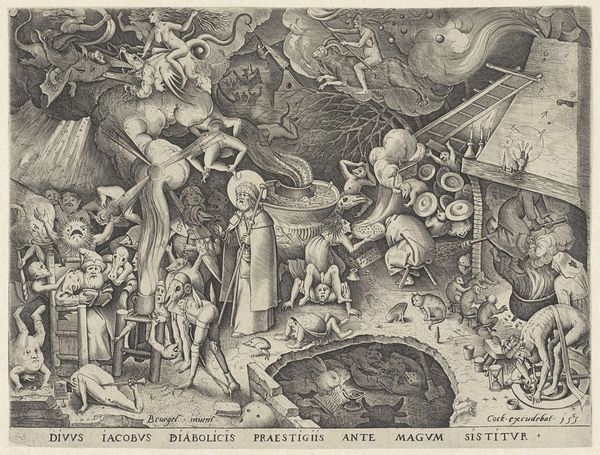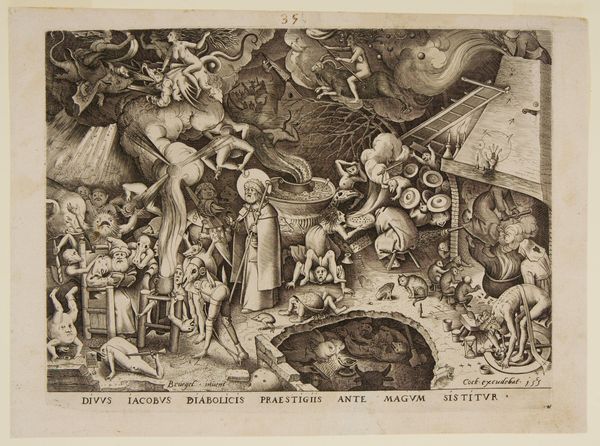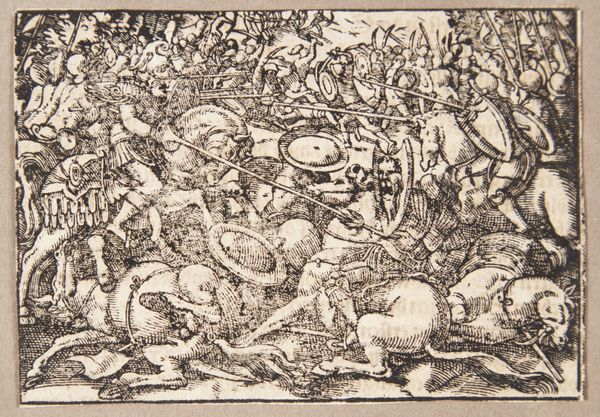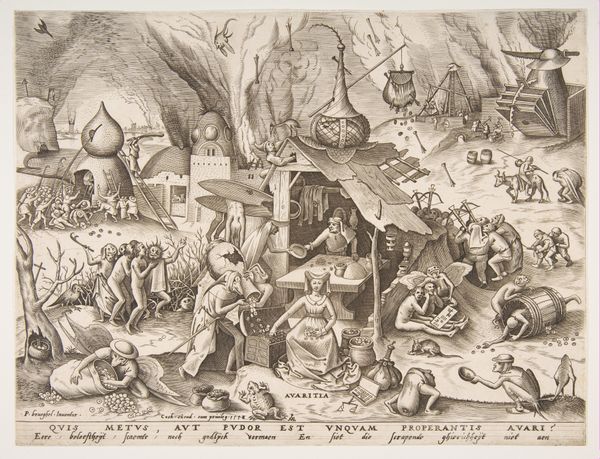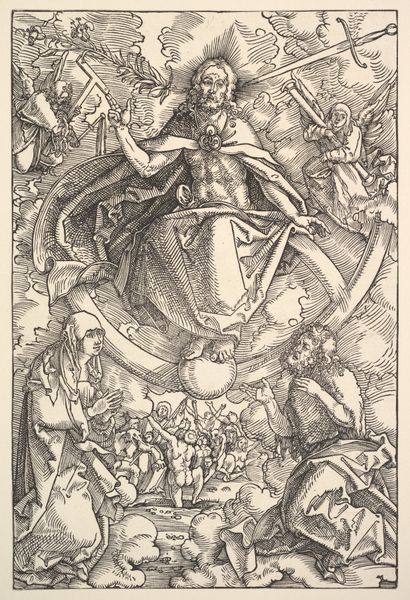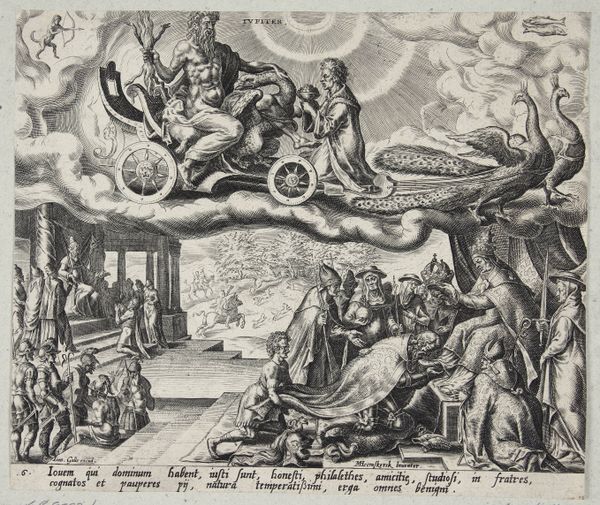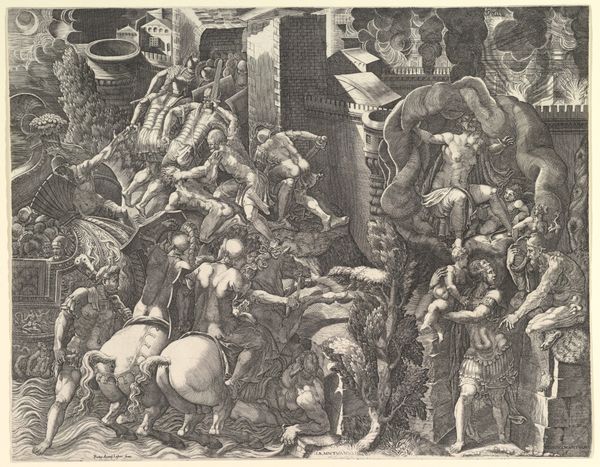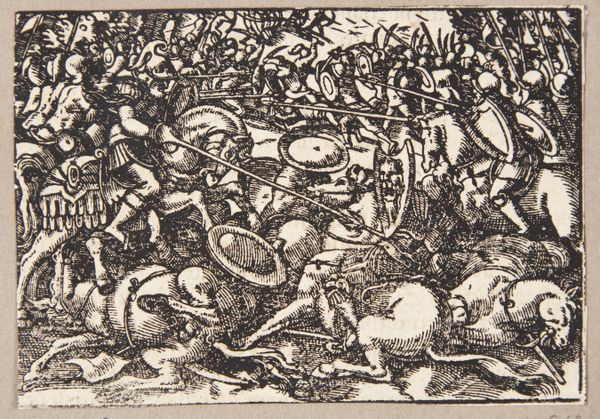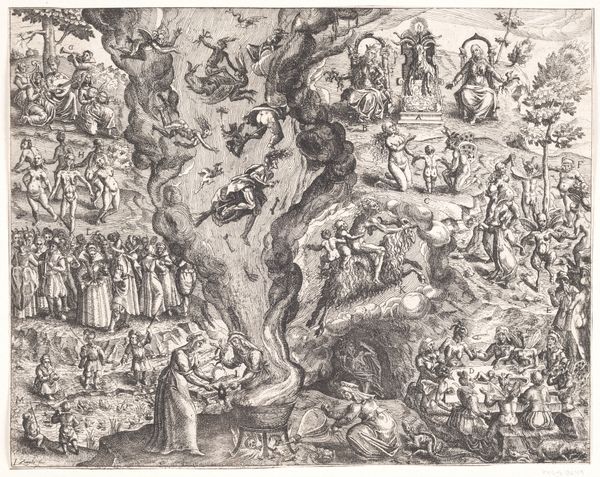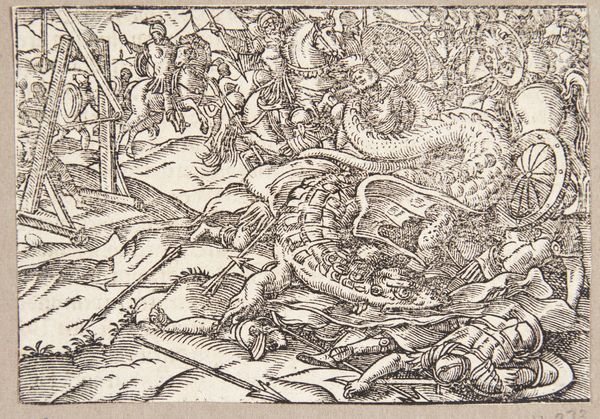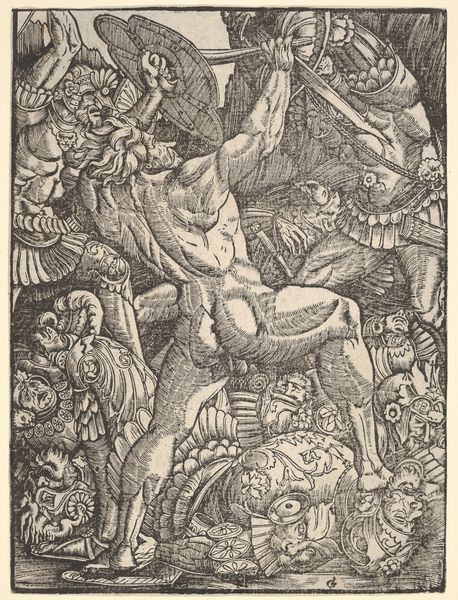
James the late emperor of the Devil is stopped the illusions of a magician 1565
0:00
0:00
pieterbruegeltheelder
Bibliothèque nationale de France (BnF), Paris, France
print, photography, engraving
#
allegory
#
narrative-art
# print
#
charcoal drawing
#
mannerism
#
figuration
#
charcoal art
#
photography
#
highly detailed
#
men
#
line
#
history-painting
#
engraving
Dimensions: 22 x 29 cm
Copyright: Public domain
Curator: Welcome to this stunning print by Pieter Bruegel the Elder, created in 1565. Its full title is, “James the late emperor of the Devil is stopped [from] the illusions of a magician.” It's currently held in the Bibliothèque nationale de France. Editor: My first reaction is honestly, it's terrifying. So many bizarre, distorted figures crammed into every corner. The detail is astonishing. Curator: Yes, Bruegel certainly packed it with visual information, creating a veritable compendium of late-Medieval anxieties. Notice how St. James stands resolutely in the center, a beacon of reason amid this chaotic spectacle. He represents order standing against deceptive practices, illusions created through manipulation. Editor: The "magician," though, that's interesting to me. Who's employing who? The chaotic figures are all caught in repetitive labor: grinding, carrying, cooking, some stuck in torture devices. This engraving must have been laborious work too; I’m keen to know more about its social and material context. Curator: Bruegel presents devils enacting torturous daily tasks, implying they aren't powerful but actually pitiable, controlled by some hidden hierarchy. I wonder if it relates to concerns of economic imbalance and forced work in Bruegel's own time. St James brings not just religious strength but exposes hidden systems of oppression. Editor: Maybe the so-called "magician" is simply another worker then. Interesting point. Look how central the alchemical vat is to this composition! What are its socio-economic connotations in that period? This cauldron-like construction speaks to the economic realities of resource transformation. Curator: It evokes so many archetypal fears: hellfire, punishment, deception... Bruegel brilliantly exploits symbolic references—even details like the saint's garments speak to the protection that Christian iconography offered society at that time. Editor: I am moved by what looks like mass-produced labor through this lens. It appears as a system that entraps. Bruegel certainly gives the idea of eternal punishment a striking form, drawing clear visual ties between labour, economy and moral anxieties. Curator: Absolutely. It all prompts deep reflection about how such complex systems of beliefs—visualized so powerfully here—are generated and sustained through the ages. Editor: A chilling reminder, that behind all of the imagery and symbolic weight there lies an actual manufacturing process using skilled labor and real resources. A true conversation-starter!
Comments
No comments
Be the first to comment and join the conversation on the ultimate creative platform.
